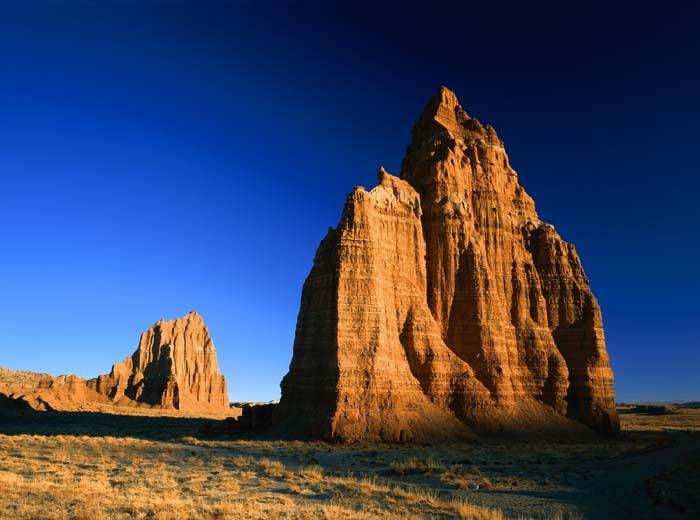 IF the name Dry Fork Coyote Gulch doesn’t give fair warning that this is not your average hike, then the haunting drive to the trailhead will remove all doubt. The sandy Hole-in-the-Rock Road is one of the few routes that even attempt to enter the biblical expanse of desert in southern Utah called the Grand Staircase-Escalante National Monument, and when I made a pilgrimage there last summer, I didn’t pass a single car, let alone a sign of human habitation.
IF the name Dry Fork Coyote Gulch doesn’t give fair warning that this is not your average hike, then the haunting drive to the trailhead will remove all doubt. The sandy Hole-in-the-Rock Road is one of the few routes that even attempt to enter the biblical expanse of desert in southern Utah called the Grand Staircase-Escalante National Monument, and when I made a pilgrimage there last summer, I didn’t pass a single car, let alone a sign of human habitation.
I gamely reminded myself that this was precisely what I’d been looking for — a landscape unchanged since 1872 — and set off into the piercing light.

I’d gone to southern Utah on the trail of an improbable outdoor adventurer — Frederick Samuel Dellenbaugh, who at the ripe age of 18 joined the last great voyage of exploration in the Old West. This Gilded Age Hardy Boy made it through the raw desert in May and June 1872 with a group of amateur explorers who were hardly more qualified than himself. In his later years, Dellenbaugh traveled the world as an artist and writer, and helped to found, in 1904, the esteemed Explorers Club, now on 70th Street on the Upper East Side of Manhattan.

But I was fascinated by his teenage adventure, largely forgotten today, when he and his friends found the first route through southern Utah’s maze of canyons, discovering the last unknown river in the continental United States, the Escalante, and the last mountain range, the Henrys. They were the first to peer into that phantasmagoric expanse of Bryce Canyon and the first to cross what is now Capitol Reef National Park.

At one particularly tricky canyon crossroad, they tried to convince a Ute Indian to act as a guide, “for the labyrinth ahead was a puzzle,” Dellenbaugh later recalled. After the man wandered off, the group pressed on anyway, trusting to their spirit and wits.
This corner of the southern Utah has since been immortalized by the painter Maynard Dixon, the novelist Zane Grey, the photographer Ansel Adams and countless Hollywood westerns. And yet, it still qualifies as the best-kept secret in the West. While millions of travelers are drawn every year to Grand Canyon and Zion National Parks, Grand Staircase-Escalante and its surrounding area offer a seemingly endless choice of natural wonders that lie blissfully forgotten and empty. It’s America’s Outback.

SHORTLY after starting the Coyote Gulch hike, I had to wonder if I might not disappear into the desert void. Back in the town of Escalante, some rangers had given me a printout of directions to the three slot canyons.
“These are unmarked routes,” it screamed in bold print. “Hikers must pay attention to landmarks so they can find their way out.”
I had lost sight of the first stone cairns almost immediately, as I stumbled down to the dry river wash at the bottom of the ravine. (“Water is scarce,” the printout helpfully noted.) After a few false leads, I made it to Peek-a-Boo Canyon, whose hard-to-spot entrance was surrounded by what looked like a shallow pool: I took a step in and sank straight up to my thighs in thick mud. As the sun continued to climb in the sky, I wished for my own Ute guide — or at least a GPS tracking system.
Hugging the canyon wall for shade, I pressed on heroically and found Spooky Canyon, named for its otherworldly atmosphere. It was only an 18-inch-wide crack in the rock, but to me it yawned like the gateway to Shangri-La.
No comments:
Post a Comment